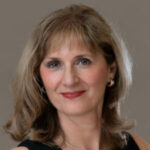Mira Keyes, MD, FRCPC, FABS, presented “Brachytherapy for Prostate Cancer” as part of a course on Prostate Brachytherapy released in 2021 and created by the American Brachytherapy Society in partnership with Grand Rounds in Urology.
How to cite: Keyes, Mira. “Brachytherapy for Prostate Cancer.” September 2021. Accessed Apr 2025. https://grandroundsinurology.com/brachytherapy-for-prostate-cancer/
Brachytherapy for Prostate Cancer – Summary
As part of a special course on brachytherapy for prostate cancer from the American Brachytherapy Society and Grand Rounds in Urology, Mira Keyes, MD, FRCPC, FABS, Clinical Professor at the University of British Columbia (UBC) and a radiation oncologist at the Vancouver Centre of the British Columbia Cancer Agency (BCCA), gives an overview of brachytherapy for prostate cancer (PCa), making a case against its declining use based on its efficacy. She begins by introducing the American Brachytherapy society, which was founded in 1978 to provide insight, rationale, and research into the use of brachytherapy in the treatment of both malignant and benign conditions. Dr. Keyes then describes how brachytherapy was performed with radium tubes when it was invented in 1901, and was then subsequently done with needles beginning in 1915. She concludes her short history by marking 1983 as the beginning of the modern era of prostate brachytherapy, thanks to advances in imaging capabilities. Dr. Keyes discusses data showing that brachytherapy is associated with better survival in patients with local to advanced cervical cancer. She then goes over the processes for high dose rate and low dose rate brachytherapy for PCa, focusing on the quick recovery, high cure rates, and minimal to no incontinence or sexual dysfunction as benefits for both treatments. Dr. Keyes shows data on brachytherapy utilization for PCa depicting its decline since 2003 due to robotic prostatectomy use, PSA screening changes, active surveillance low-risk treatment recommendation changes, and higher reimbursement for IMRT and robotic surgery. She also discusses data showing that 10% of US cancer care spending is on prostate cancer, with the highest procedure cost per patient going to robotic surgery. Dr. Keyes compares the use of brachytherapy in the US to that of Canada, stating that Canada’s increasing use is due to a reimbursement system that incentivizes brachytherapy, and the education of the public, residents, general practitioners, and urologists. She concludes that the benefits of brachytherapy support its use for localized PCa in the US.
For more on brachytherapy, check out the first module of the free Prostate Brachytherapy course from GRU and the American Brachytherapy Society.
ABOUT THE AUTHOR
Mira Keyes, MD, FRCPC, FABS, is a Clinical Professor at the University of British Columbia (UBC) and a radiation oncologist at the Vancouver Centre of the British Columbia Cancer Agency (BCCA). Dr. Keyes has a wide range of research interests, including Prostate Brachytherapy, Genito-Urinary Oncology, Breast Cancer, Postgraduate Medical Education, and Patient Communication.
Dr. Keyes received her MD at the University of Novi Sad in Yugoslavia, Serbia. Dr. Keyes then received her FRCPC Radiation Oncology from the Royal College of Physicians of Canada. Dr. Keyes completed her fellowship at the Royal College of Physicians of Canada for Radiation Oncology, in the Vancouver Cancer Center.




